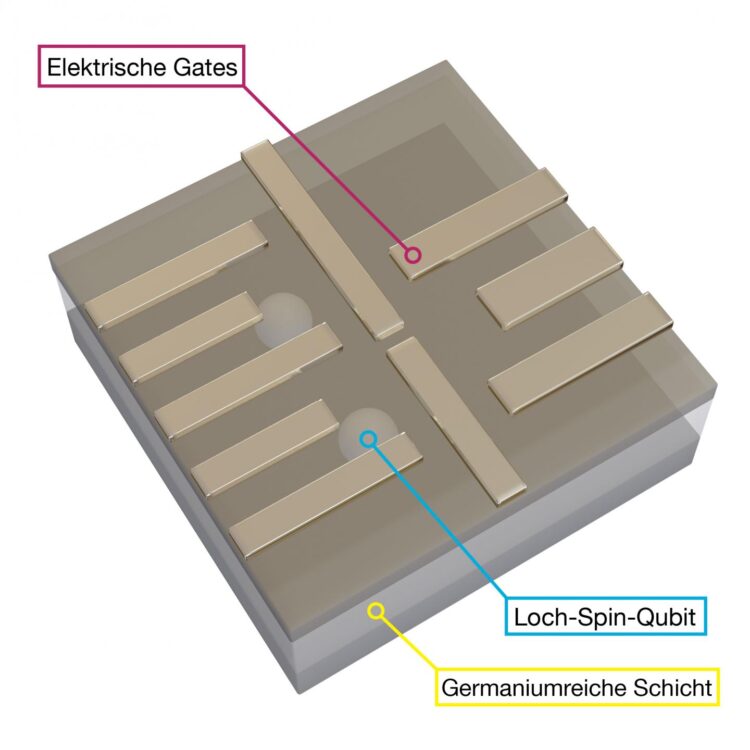Scientists found a new and promising qubit at a place where there is nothing
In a study published in Nature Materials and led by Daniel Jirovec from the Katsaros group at IST Austria in close collaboration with researchers from the L-NESS Inter-university Centre in Como, Italy, scientists now have created a new and promising candidate system for reliable qubits.
Spinning Absence
The researchers created the qubit using the spin of so-called holes. Each hole is just the absence of an electron in a solid material. Amazingly, a missing negatively charged particle can physically be treated as if it were a positively charged particle. It can even move around in the solid when a neighboring electron fills the hole. Thus, effectively the hole described as positively charged particle is moving forward.
These holes even carry the quantum-mechanical property of spin and can interact if they come close to each other. “Our colleagues at L-NESS layered several different mixtures of silicon and germanium just a few nanometers thick on top of each other. That allows us to confine the holes to the germanium-rich layer in the middle,” Jirovec explains. “On top, we added tiny electrical wires – so-called gates – to control the movement of holes by applying voltage to them. The electrically positively charged holes react to the voltage and can be extremely precisely moved around within their layer.”
Using this nano-scale control, the scientists moved two holes close to each other to create a qubit out of their interacting spins. But to make this work, they needed to apply a magnetic field to the whole setup. Here, their innovative approach comes into play.
Linking Qubits
In their setup, Jirovec and his colleagues cannot only move holes around but also alter their properties. By engineering different hole properties, they created the qubit out of the two interacting hole spins using less than ten millitesla of magnetic field strength. This is a weak magnetic field compared to other similar qubit setups, which employ at least ten times stronger fields.
But why is that relevant? “By using our layered germanium setup we can reduce the required magnetic field strength and therefore allow the combination of our qubit with superconductors, usually inhibited by strong magnetic fields,” Jirovec says. Superconductors – materials without any electrical resistance – support the linking of several qubits due to their quantum-mechanical nature. This could enable scientists to build new kinds of quantum computers combining semiconductors and superconductors.
###
Media Contact
Patrick Müller
[email protected]
Related Journal Article
http://dx.





